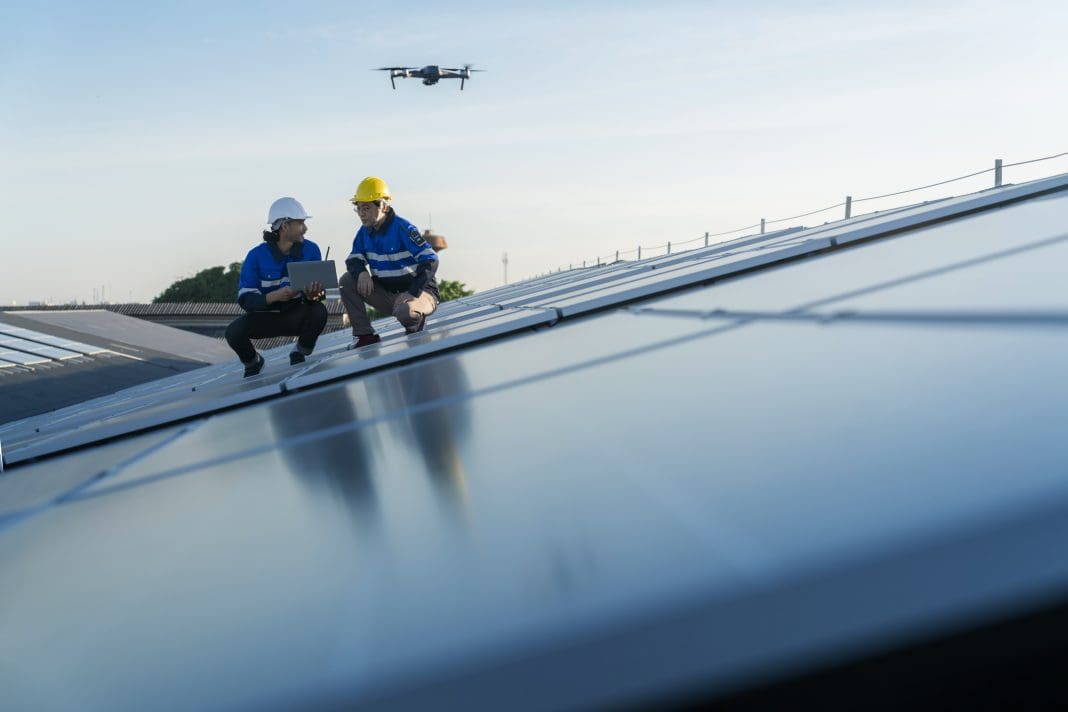As the UK grapples with economic uncertainties, AI in construction emerges as a crucial ally in project management, Andy Thomas, visualisation lead at AECOM, explains
The concept of Artificial Intelligence (AI) has been around since the 1950s, but recent rapid advancements in technology have put it at the heart of plans to develop and grow the UK economy.
However, as with any new breakthrough, there is some resistance, with nearly a third of Brits worried that their jobs are replaceable by AI.
Indeed, AI’s impact on jobs is complex and will pose challenges as well as add value—but there’s no doubt it’s here to stay. So, it’s important to understand how the built environment can embrace and benefit from the technology.
Delivering projects efficiently
At a basic level, embracing AI in construction will help contractors and design teams boost project speed. The UK faced economic instability throughout 2023, and while falling inflation and potential interest cuts down the line will create better conditions for growth, 2024 remains an unknown quantity.
As such, developers will look to firms that, in addition to sustainability, can prioritise speed and value for money in project delivery.
This might include utilising techniques like machine learning and genetic algorithms in their analysis and design process, through to the deployment of AI tools for project scheduling, resource allocation and risk assessment in construction management.
Design and creativity
From a design perspective, AI in construction is making a significant impact in 3D visualisation. AI-generated images can serve as reference points for architects, furthering the shift away from traditional sketching and watercolour techniques in favour of computer-rendered images.
Rather than replacing human creativity and critical thinking, AI-driven tools can automate some initial project tasks, such as generating lifelike conceptual visuals—which once required meticulous manual effort.
This frees up time for designers to focus on their creative input. Exciting new developments like ‘text to image’ and ‘text to 3D model’ hold the promise of transforming collaboration with designers and reshaping the production of 3D imagery, animation, and, ultimately, virtual reality and real-time experiences.
This will be a huge benefit in the pre-design and design development stages of a project, where architects and engineering teams will collaborate to ensure completion is timely, within budget, and meets the client’s needs.
AI in construction can also help the design phase of a project from a sustainability perspective. Certain tools are able to analyse and optimise building designs for factors such as improving energy efficiency – as well as structural stability and cost-effectiveness.
Energy efficiency is a vital contributor to sustainable architecture, and AI has the capability to examine building data, including wind patterns, solar radiation, and building orientation, and come up with optimised designs.
It can also help select sustainable building materials by examining their environmental impact and evaluating factors such as durability, recyclability, and biodegradability.
At the project’s start-up phase, we can now also generate multiple images and experiment with different shapes, design styles, materials and more. This speeds up the process of discarding unsuitable options and refining the initial designs based on feedback.
The second practical use is during the post-production phase of images. This can also help promote collaboration with clients – translating inputs from the design team into visual concepts that can be continually refined until in line with the client’s vision.
AI in construction can also facilitate adding, removing and modifying environmental elements, such as trees, people and vehicles, in real-time.
It can also alter the background, image format and rescale without compromising detail. This will improve the efficiency, accuracy and productivity of project design compared to a traditional, manual approach.
Stakeholder engagement and social value
As well as shaping technical processes and client input, AI in construction has the potential to further improve communication and stakeholder engagement – something the built environment industry is often criticised for falling short in.
During the pandemic, we launched a virtual consultation platform that has the capacity to replicate an in-person consultation event, displaying digital materials including exhibition boards, maps, videos, virtual reality and sound demonstration.
The platform can track anonymous user data, which provides demographic information on members of the public engaging with the material and helps clients understand the best methods of engaging with people and which stakeholders aren’t being represented.
It was fully accessible, and users could navigate solely by keyboard or screen reader. However, during its development, we noticed that screen assistance technology lacked the ‘naturalness’ of human conversation. To address this, we implemented AI text-to-speech technology which allowed users to customise communication style and tone based on their individual preference.
We also introduced an AI-driven chatbot, trained on FAQs and consultation materials, to manage demand for our ‘live chat’ feature and allow continuous engagement. This increased engagement and response times.
It’s clear the built environment industry will have to evolve in line with AI technology, staying up to date with the latest developments and investing in training to remain competitive.
AI in construction is expected to transform the way we work and in doing so we will continue to see benefits such as improved efficiency and productivity, as well as improvements in collaboration and communication.
We’ve already seen some of the benefits that AI will bring, but we’re just at the start of this revolution. The industry could look very different in just a few years, and those who are best-placed to succeed will be best able to embrace change.

















